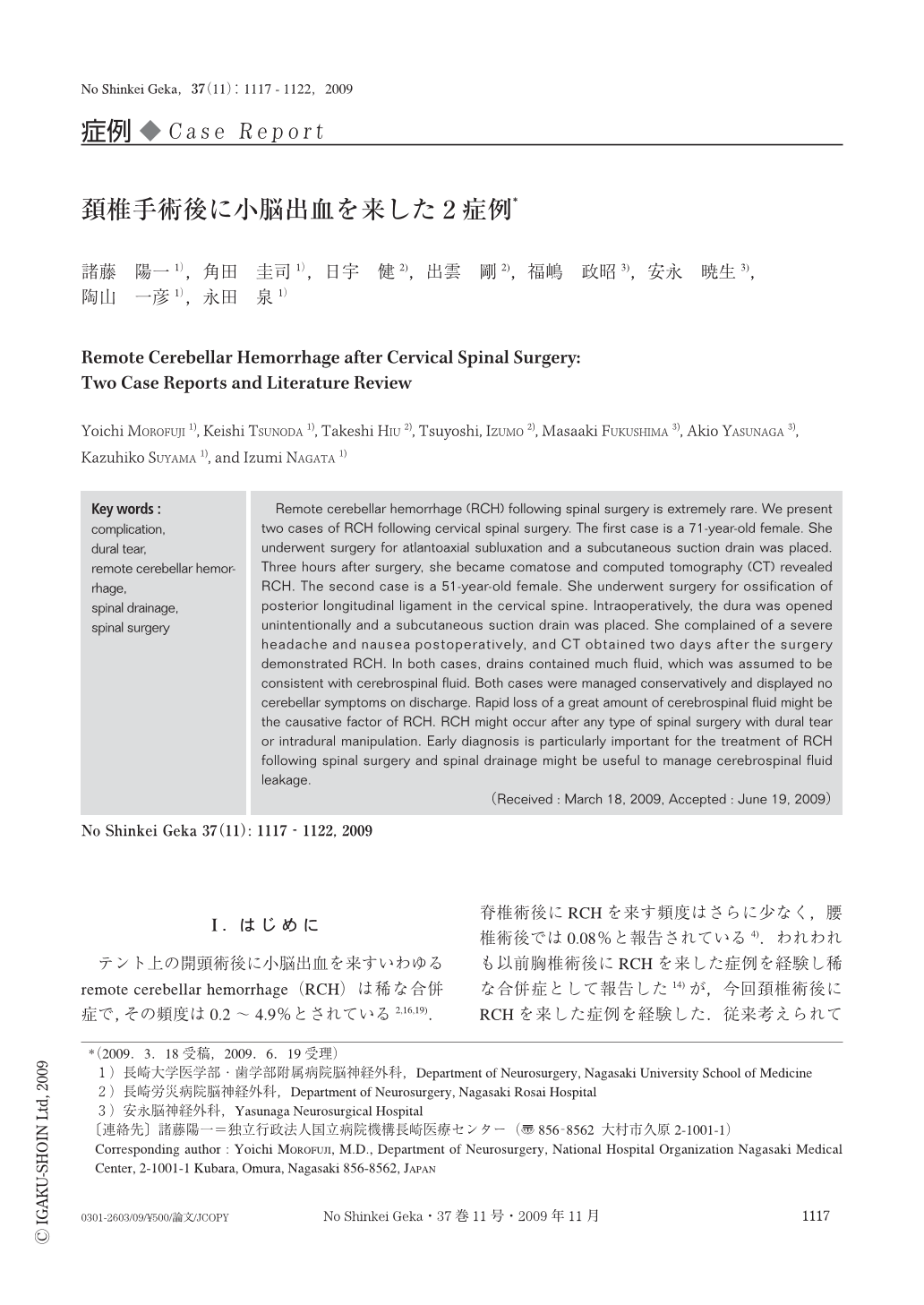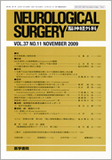Japanese
English
- 有料閲覧
- Abstract 文献概要
- 1ページ目 Look Inside
- 参考文献 Reference
Ⅰ.はじめに
テント上の開頭術後に小脳出血を来すいわゆるremote cerebellar hemorrhage(RCH)は稀な合併症で,その頻度は0.2~4.9%とされている2,16,19).脊椎術後にRCHを来す頻度はさらに少なく,腰椎術後では0.08%と報告されている4).われわれも以前胸椎術後にRCHを来した症例を経験し稀な合併症として報告した14)が,今回頚椎術後にRCHを来した症例を経験した.従来考えられているより,頻度が高い合併症である可能性もあり文献的考察を加え報告する.
Remote cerebellar hemorrhage (RCH) following spinal surgery is extremely rare. We present two cases of RCH following cervical spinal surgery. The first case is a 71-year-old female. She underwent surgery for atlantoaxial subluxation and a subcutaneous suction drain was placed. Three hours after surgery,she became comatose and computed tomography (CT) revealed RCH. The second case is a 51-year-old female. She underwent surgery for ossification of posterior longitudinal ligament in the cervical spine. Intraoperatively,the dura was opened unintentionally and a subcutaneous suction drain was placed. She complained of a severe headache and nausea postoperatively,and CT obtained two days after the surgery demonstrated RCH. In both cases,drains contained much fluid,which was assumed to be consistent with cerebrospinal fluid. Both cases were managed conservatively and displayed no cerebellar symptoms on discharge. Rapid loss of a great amount of cerebrospinal fluid might be the causative factor of RCH. RCH might occur after any type of spinal surgery with dural tear or intradural manipulation. Early diagnosis is particularly important for the treatment of RCH following spinal surgery and spinal drainage might be useful to manage cerebrospinal fluid leakage.

Copyright © 2009, Igaku-Shoin Ltd. All rights reserved.


